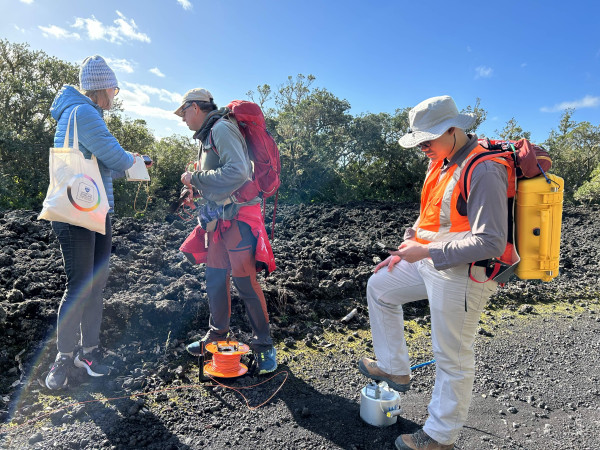Rangitoto still warm 600 years on – what can it tell us about future eruption?
Six hundred years after Rangitoto erupted, scientists have found evidence that the solidified magma sitting beneath the volcano is still hot enough to drive a hydrothermal system on the island, giving insight into how a future eruption in Auckland might shape the region.

Located 10 kilometres from Auckland’s city centre, Rangitoto is the largest and youngest of the 53 volcanoes making up the dormant Auckland Volcanic Field (AVF).
“This is the first time we’ve detected signs of heat from volcanic activity in the AVF, but it doesn’t mean Rangitoto is active or preparing to erupt again” explains lead researcher Alutsyah Luthfian (Fian) from the University of Auckland.
“While we had expected the unerupted magma under the volcano to be solidified, we were really surprised that it is still warm enough to heat groundwater and drive a weak hydrothermal system, 600 years later,” says Fian.
This research helps shed light on what might happen after an eruption in Auckland. After a similar eruption in Heimaey, Iceland, heat from slowly cooling lava flows fuelled a geothermal power station for 15 years, supplying power and heating to most of the island's homes.
Previous research in Auckland showed that heat from thin, short-lived lava flows would likely not penetrate deeply enough to affect underground pipes and cables, however, that study did not examine the impacts on infrastructure from the slowly cooling magma body providing heat from below, as would be the case for years near a new volcano’s vent, according to this finding.
“With this new data point, we can potentially map a curve of how heat disperses with time and better predict the long-term environmental and societal impacts of eruptions from Auckland’s larger volcanoes like Rangitoto,” says Fian.
“Our work suggests that, like on Heimaey, the ground under and near a new volcano may stay warm for at least decades after a future eruption, impacting how Aucklanders could start to rebuild, work, and live near the newly formed volcano.”
This project is part of a wider multi-disciplinary programme known as DEVORA (DEtermining VOlcanic Risk in Auckland), studying Auckland’s volcanoes, funded by the Natural Hazards Commission Toka Tū Ake and Auckland Council.
Luthfian and his team from University of Auckland, Université de la Réunion, and GNS Science used a simple setup of copper-sulphate-filled airtight clay pots and wire to measure the natural electrical voltage across Rangitoto. The voltage signal revealed unexpected increases near the summit, suggesting warm groundwater continues to circulate underneath, hidden from view, driven by the heat released by the solidified leftover magma from six centuries ago.

Members of DEVORA research team measuring voltage at Rangitoto.
Similar voltage signals are found on large, active volcanoes like Izu-Oshima in Japan and Stromboli in Italy.
Fian's team also found elevated levels of carbon dioxide gases escaping the ground on the summit and upper eastern flank of the volcano. However, it’s not clear whether gas comes from the hydrothermal system beneath Rangitoto or is related to a nearby fault that provides a pathway for deep circulating fluids to rise to the surface, like what drives hot springs at Parakai, Waiwera and Miranda. Other researchers are working on unravelling this mystery under DEVORA and MBIE’s new Natural Hazards and Resilience Platform.
NHC’s Chief Resilience Officer, Dr Jo Horrocks, says, “This research is an important piece of insight into how a major eruption in Auckland might play out and heat its surroundings for many years after the fact.”
“It’s important to invest in research in Auckland’s volcanoes, so we can know which signs to look for and prepare for the impacts from a volcanic eruption.
“We are a long-term funder of DEVORA, and it’s been wonderful to see the research coming out of the programme over the last 15 years, which is helping us understand the risks of living in the AVF,” says Horrocks.